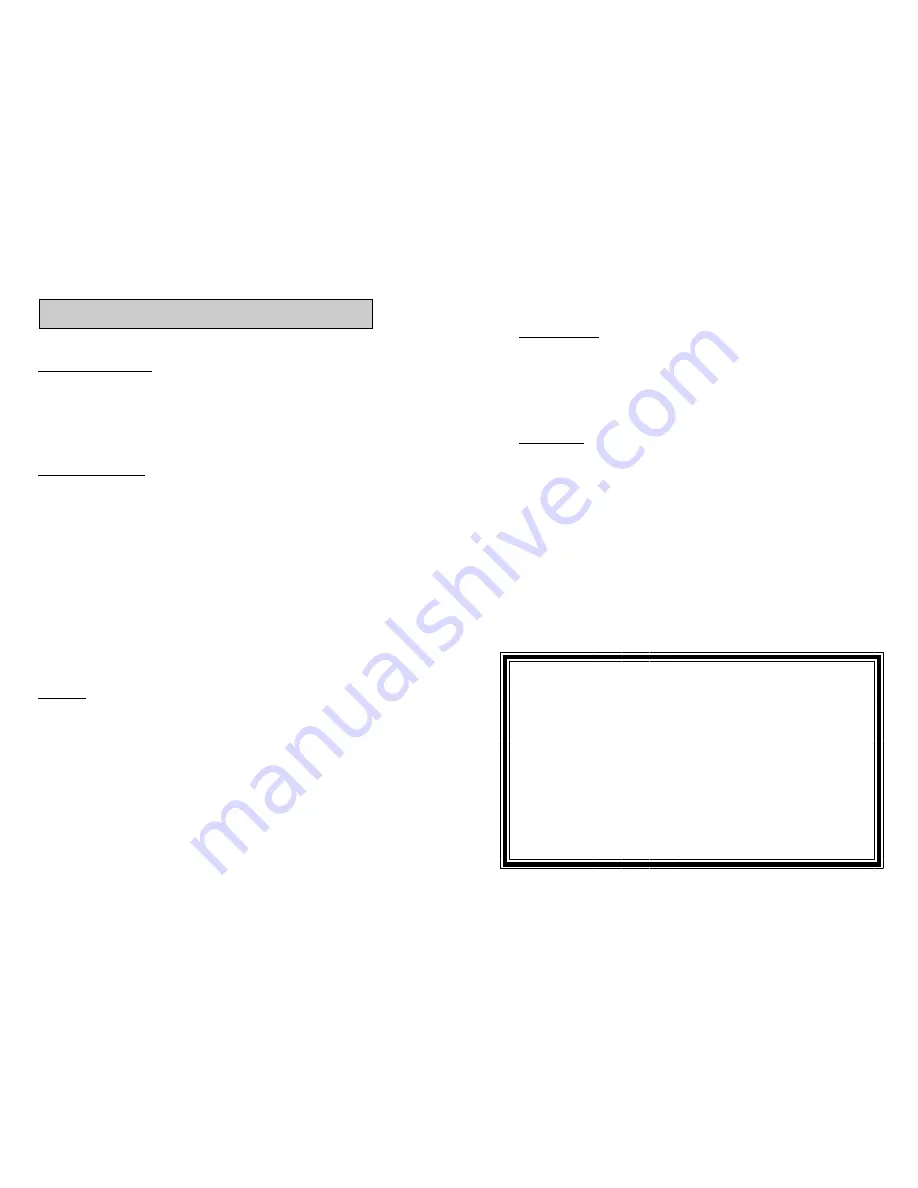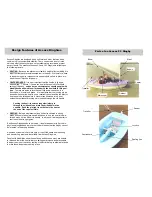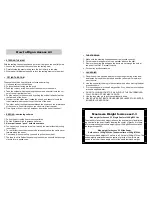
How to Rig an Access 2.3
•
STEPPING THE MAST
With the reefing line knot positioned as far as it will go on the port (left) side.
1. Loosen the knob under the console on the reefing drum
2. Carefully step the mast making sure the foot is firmly in the step.
3. With the sail full tighten the knob to lock the reefing drum onto the mast.
•
FITTING THE BOOM
The boom should be kept tidy with no loose ends trailing.
1. Untie and sort out the two ropes.
2. Position the boat facing into the wind.
3. Push the rowlock at the front end of the boom onto the bobbin.
4. Take the outhaul which runs along the boom and shackle it onto the cor-
ner of the sail (called the clew).
5. Pull the sail out to the boom end by pulling the outhaul tail and cleat it at
the front end of the boom.
6. Now sort out the other rope, (called the sheet), and shackle it onto the
rope traveller which runs across at the stern of the boat.
7. The other end of the sheet passes through the sheave on the forward end
of the console. Feed it through so you can work it from the seat.
8. Tie a figure of 8 knot to act as a stopper knot at the end of the sheet..
•
REEFING : shortening sail area
1. Pull on the port reefing line to reduce sail area
2. Pull the Starboard line to increase sail area.
3. Never pull on and “push” both sides at once.
4. You can put one complete turn of sail around the mast without adjusting
the outhaul.
5. To reef further the outhaul needs to be released to allow the sail to travel
forward along the boom.
6. Conversely, when unreefing, you need to pull on the outhaul.
7. The idea is not to flatten the sail along the boom as it should have enough
slack to form a gentle curve.
•
THE STEERING
1. Make sure the steering lines pass under the joystick correctly.
2. Fit the rudder making sure the rope traveller is above the tiller.
3. Remove the spring clip and pass the clevis pin up through the hole at
the end of the tiller. Re-insert the clip.
4. Fit the alloy joystick extension.
•
LAUNCHING
1. Pass the bow line (called a painter) through the guide ring at the bow
and fasten it around the mast with a bowline. (a knot which is always
easy to untie)
2. Use the short alloy tube to pin the centreboard up when moving the boat
around onshore.
3. Pin the centreboard in the half way position if you need to move the boat
around in shallow water.
4. DO NOT ALLOW ANYONE TO SAIL WITHOUT THE CENTREBOARD
FULLY DOWN OR THEY MAY CAPSIZE..
5. Use the long alloy pin to lock the centreboard down.
6. NEVER USE SEAT BELTS OR HARNESSES UNLESS THE CENTRE-
BOARD IS LOCKED DOWN.
Maximum Weight for Access 2.3
Max weight for Access 2.3 Single Seater = 100Kg/220 Lbs
The stability of an access dinghy relies on the body weight of a sailor be-
ing kept low in the boat, thereby lowering the center of gravity. It is there-
fore recommended that sailors weighing over 100Kg/220Lbs shouldsail
the larger Access 303.
Max weight for Access 2.3 Wide Seater
Solo sailor = 100Kg/220Lbs, Tandem sailors = 120Kg/275Lbs.
The max combined weight of 2 sailors in a 2.3 wide is 120Kg/275Lbs. The
extra weight is permissable as the centre of gravity of 2 sailors is pre-
sumed to be lower than a single sailor of the same combined weight.






















